Black trumpet mushrooms, also known as the horn of plenty or horn of death. Don't let the name confuse you though-these are one of the best wild mushrooms to harvest, hunt and cook, and are valued around the world as a gourmet ingredient and choice edible mushroom.
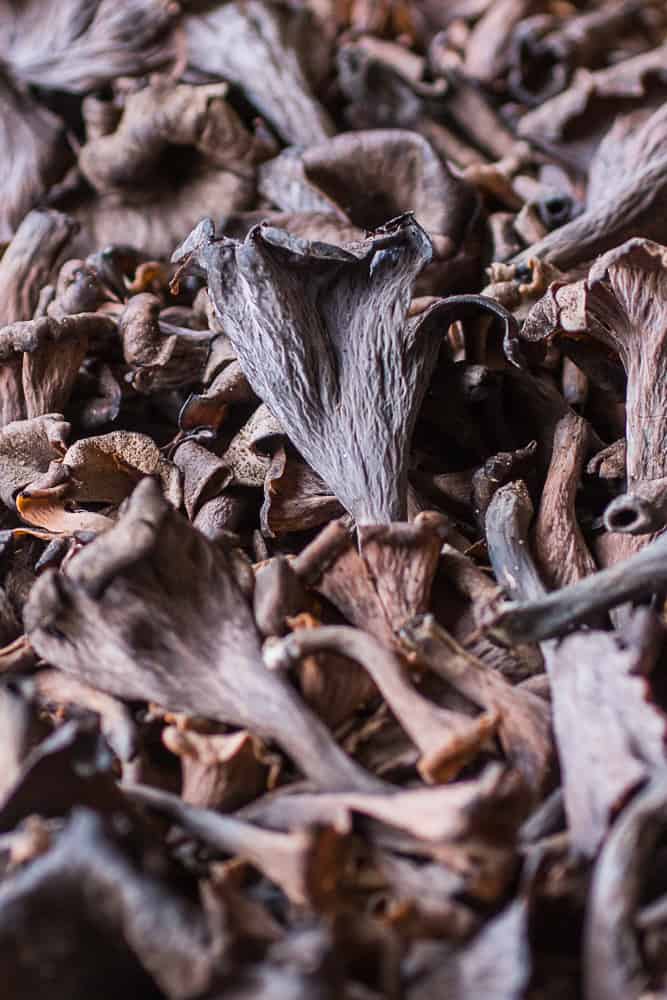
In this post I'm going to share with you everything I know about hunting, identifying, harvesting and cooking these mushrooms, along with some of my favorite recipes for black trumpets at the end.
For reference, I'm in the Midwest, so most of what I discuss here for hunting will refer to Craterellus fallax as it's the most common species near me. Older field guides may use the name Craterellus cornucopiodes, now seen as a European species.
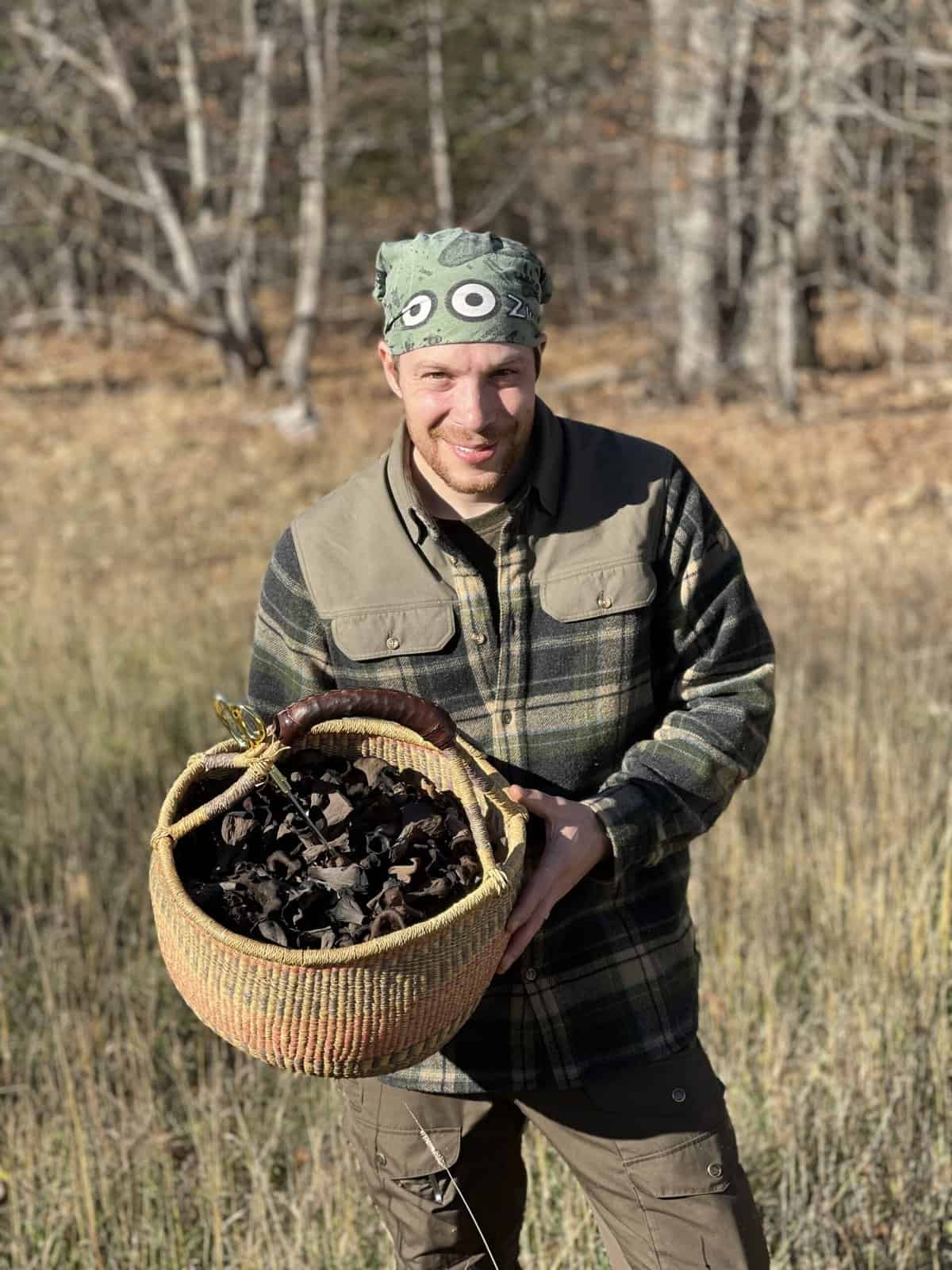
Where to Find Black Trumpet Mushrooms
In mid-summer, typically early July through October, (I've picked them as late as November) I will start to check my patches. Where do black trumpets grow? In my area, around white and red oak trees. One species (Craterellus caeruleofuscus) grows with pines, but isn't as widely available.
One of the best parts about these mushrooms is the sheer volume you can find, when, and if you find the right kind of patch. The harvests will vary from year to year depending on seasonal conditions, but there will usually be some.
Two friends of mine have near-legendary patches in Minnesota, that, on a good year, with an extra hand or two, you could pick 30, 40lbs or more. As trumpets are very light weight compared to others, that kind of quantity is massive.
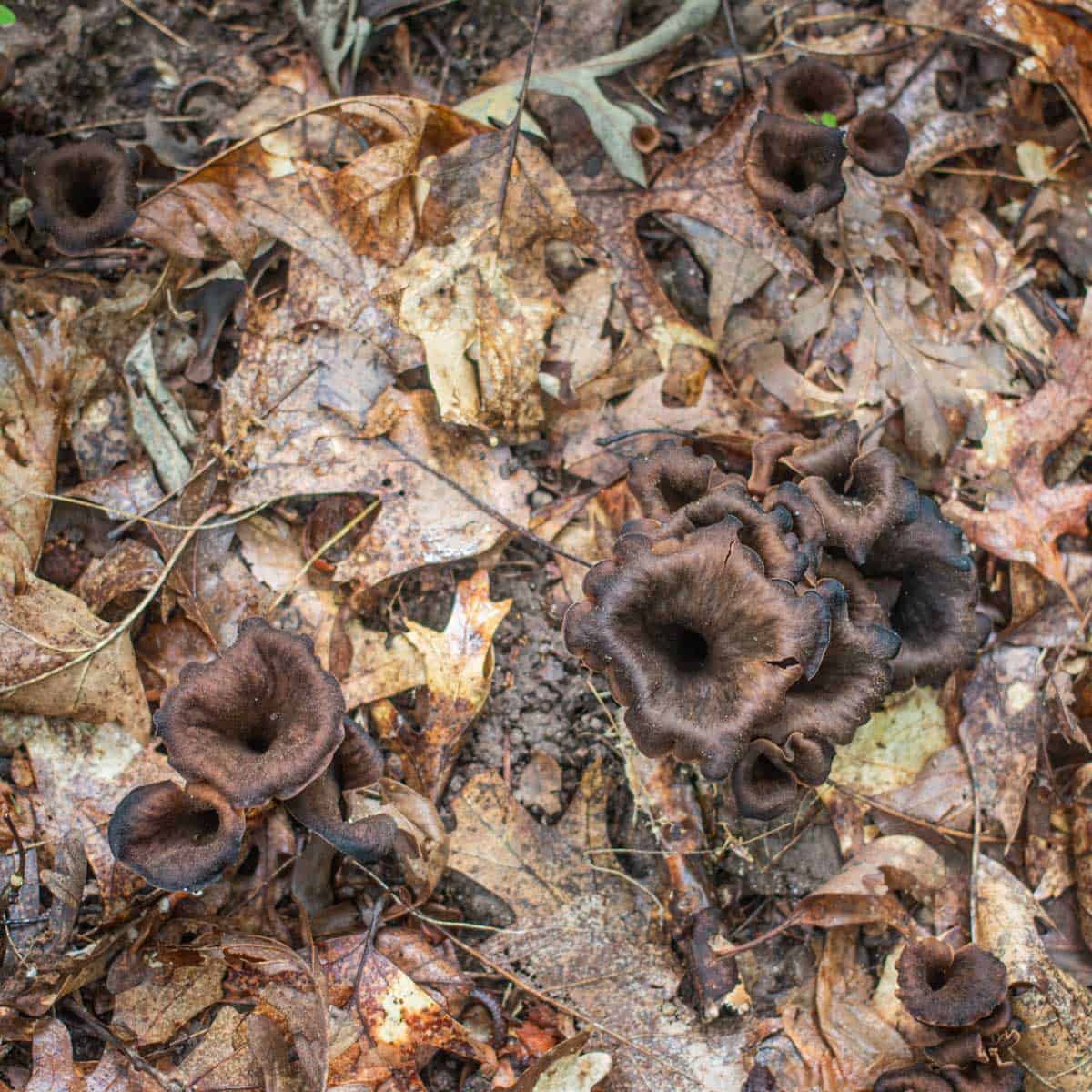
Wet and decaying areas
Often when you're hunting these I look for moist, shady areas. They may be close to a small source of water or a wet/swampy area where there's decaying and dead wood. Golden chanterelles, by comparison may occasionally be nearby, but I don't see them as much in wet areas as I do trumpets.
At least to me, black trumpets seem to operate in two ways: mycorrhizal and saprobic, meaning that they grow both in harmony with certain trees, and will seem to live off of decaying matter. Contrastingly, golden chanterelles are only mycorrhizal.
Most of the time with mushrooms from my experience, they'll be one or the other but not both, which makes trumpets extra special.
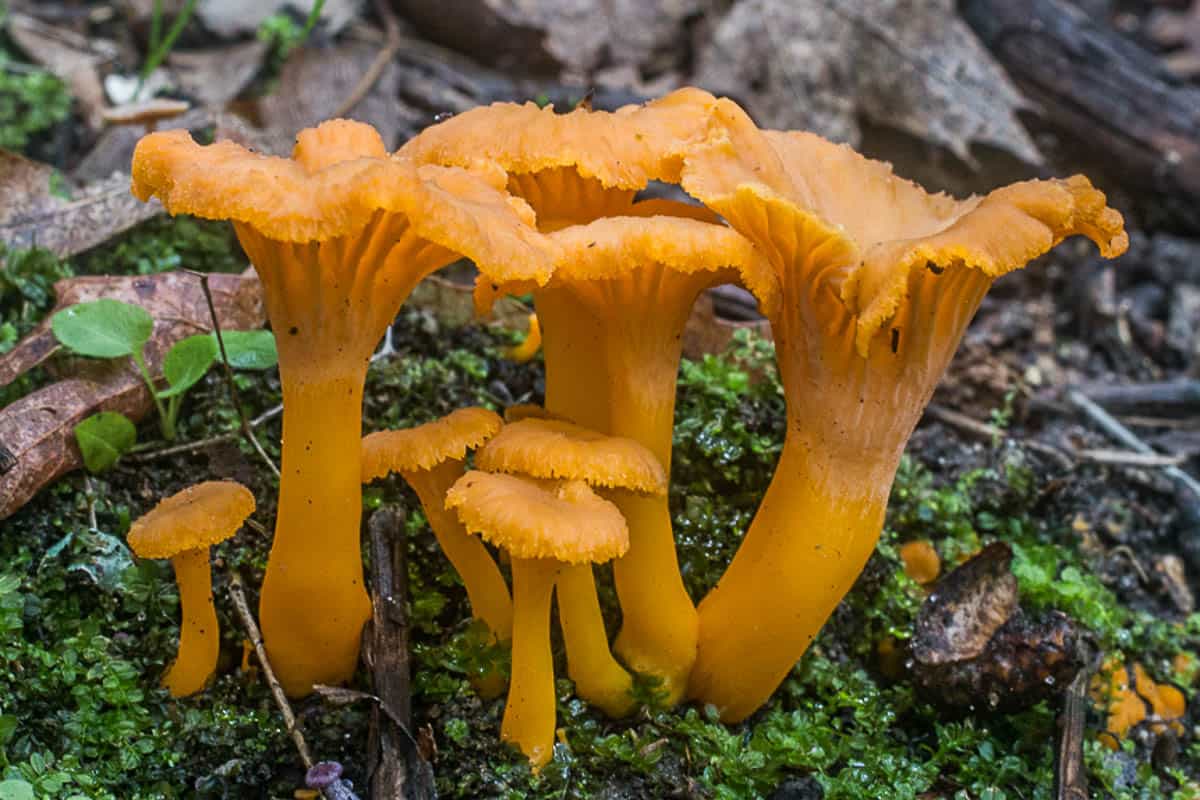
A good trick to remember when you're searching for new patches is that trumpets like to be often in the same areas as some of their other chanterelle cousins, especially the yellowfoot chanterelle which is much easier to spot from a distance as it isn't black.
If you see one of the orange mushrooms pictured above, or golden chanterelles, it's a good indication you're on the right track.
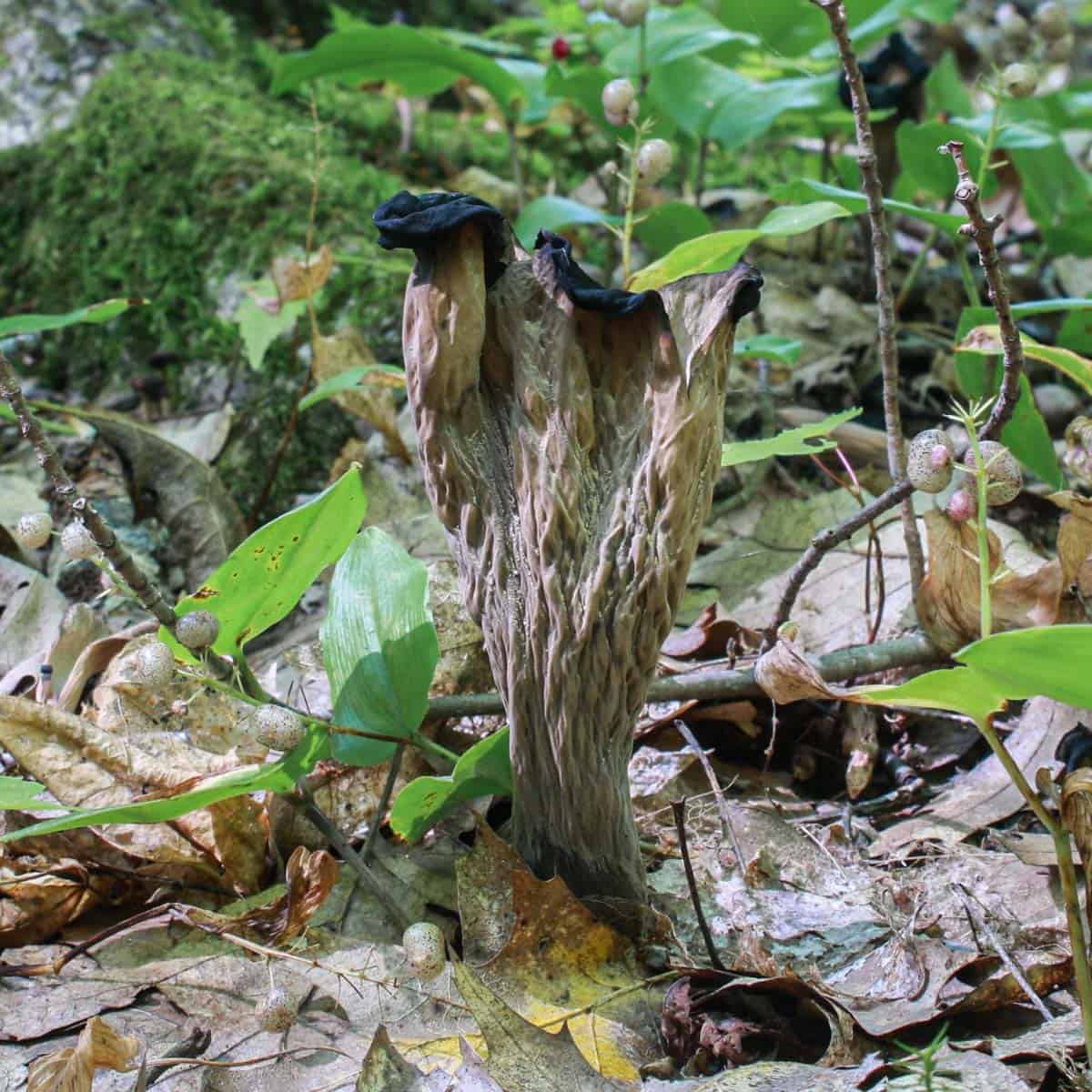
Sphagnum moss
It isn't true everywhere, but trumpets seem to have an affinity for sphagnum moss. When I'm in a forest with red or white oaks, and I start seeing sphagnum moss during the summer, I make sure to keep my eyes open for trumpets.
More often than not, when I see moss and start looking closely, and walking slowly, I'll find some.
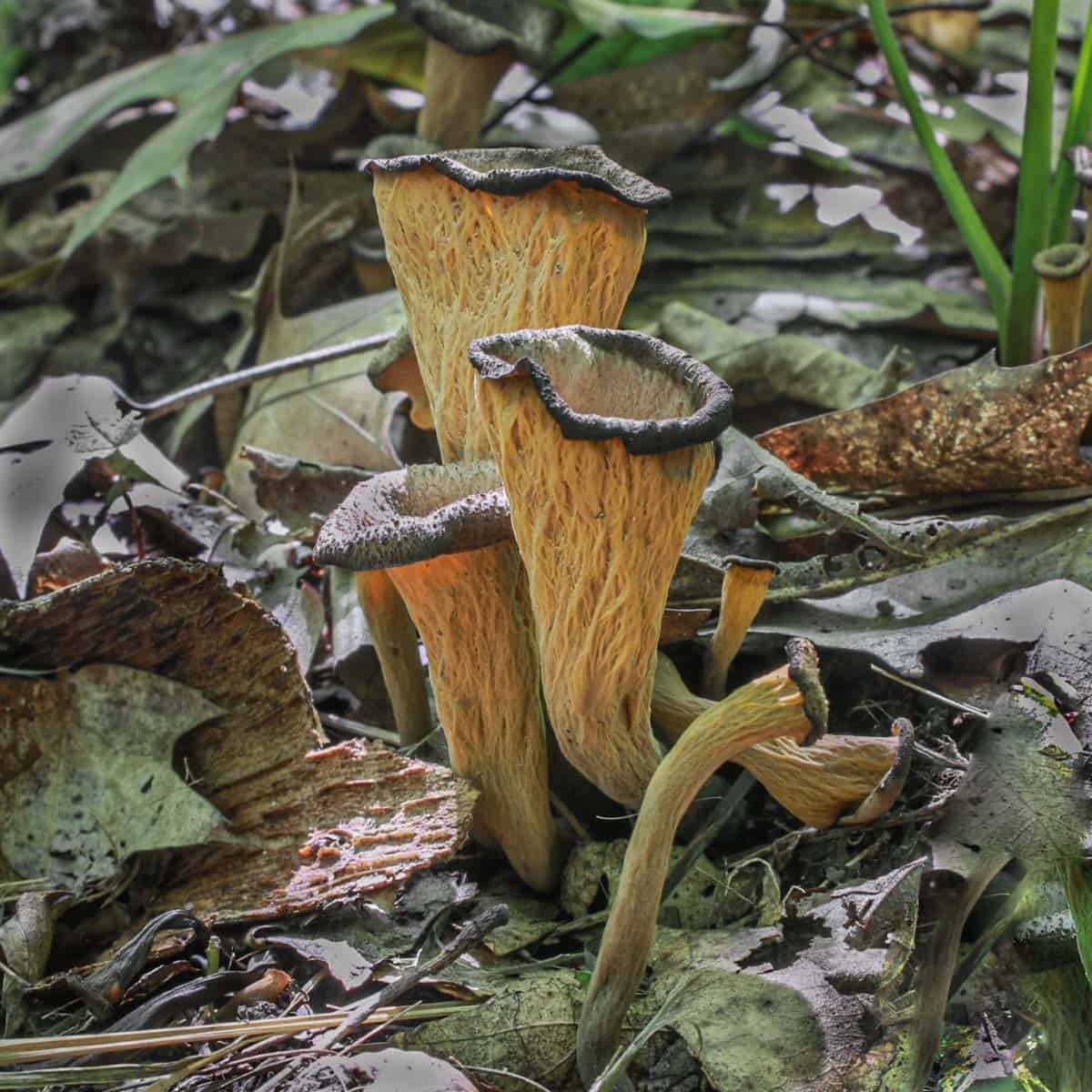
Black Trumpet Mushroom Identification
Found across North America, black trumpets are one of the easiest wild mushrooms to identify, with nearly no real look-a-likes. Your biggest challenge will be finding a good patch at the right time.
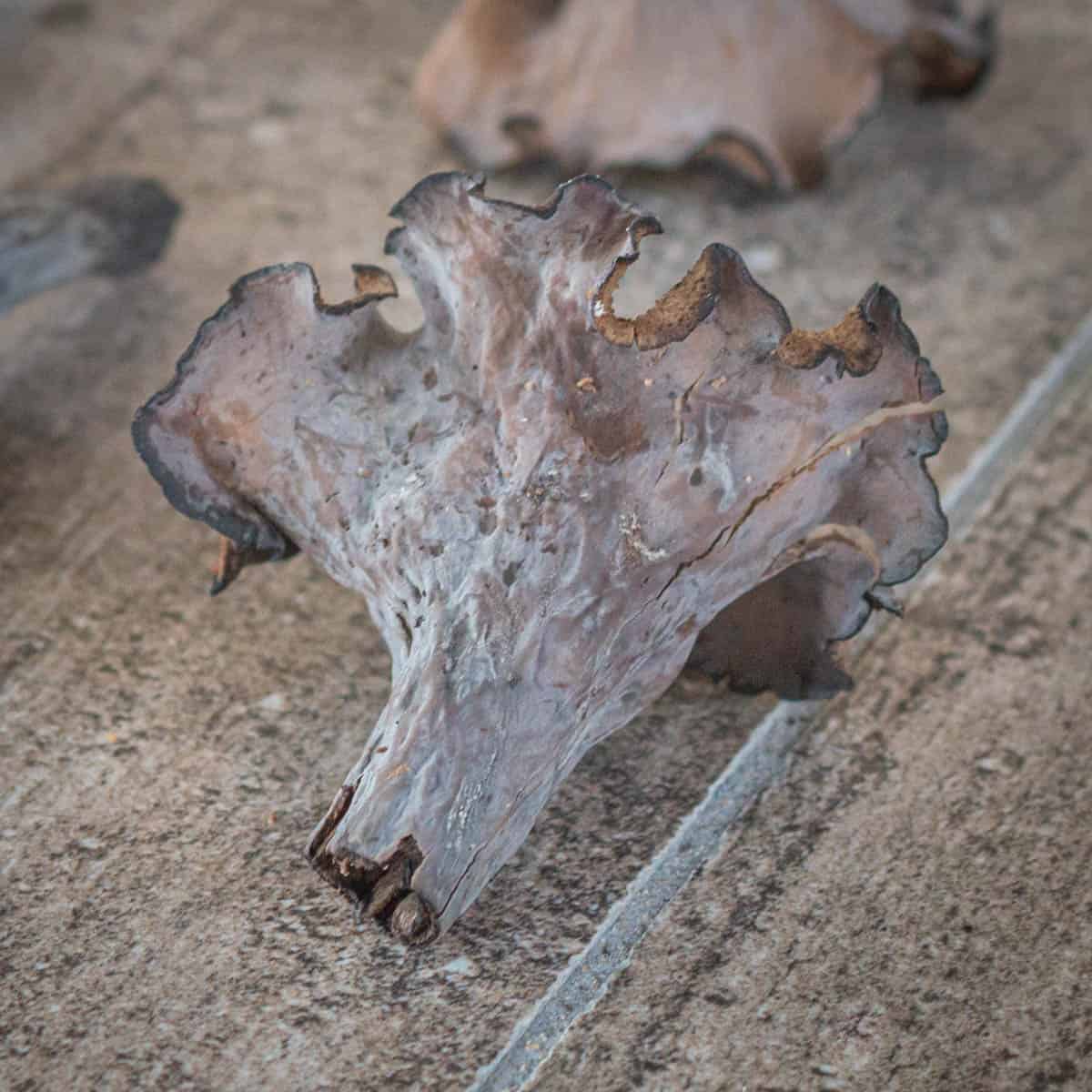
Black trumpets
- Have a whitish to creamy spore print.
- Have an unique aroma I describe as dark and intensely sweet aroma of apricots that are nearly overripe. Golden chanterelles, by comparison, smell like fresh apricots.
- Are mostly black, or shades of grey, but one species is nearly blue (see below) and white, albino mutations are also possible.
- Often grow clustered, with a shape like a horn or funnel.
- Do not have gills, but can have false gills. They may have veins that are difficult to see on the outside (called the spore-bearing surface or hymenium) or the veins may be more pronounced with some specimens-see below.
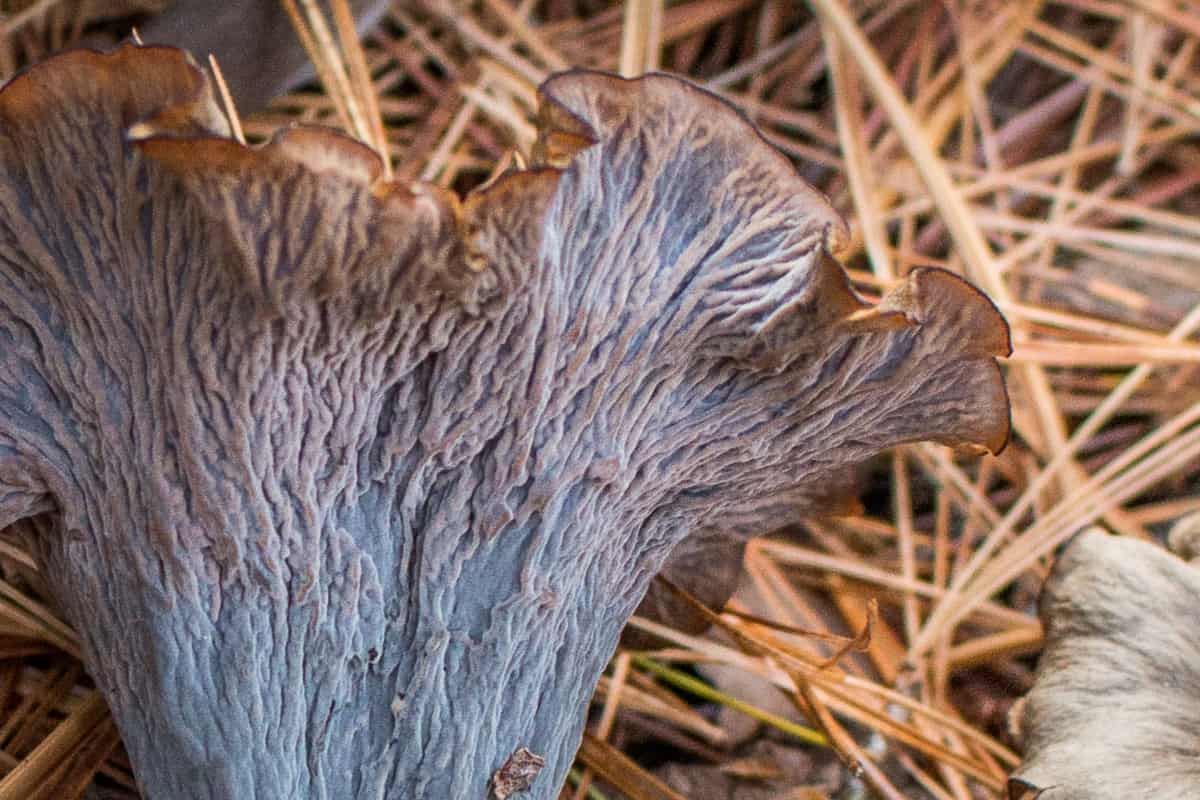
Different Species
There's more than one species to learn about and enjoy, each one with slightly different characteristics. Two I've found are craterellus foetidus and craterellus cinereus, which some may call black chanterelles, but there's others too.
No matter what kinds grow near you, one thing's for certain: if it's a true black trumpet it's edible and delicious, and knowing the exact species is purely academic. If you're like me though, the more you learn about wild mushrooms, the more you'll want to know the exact types your finding.
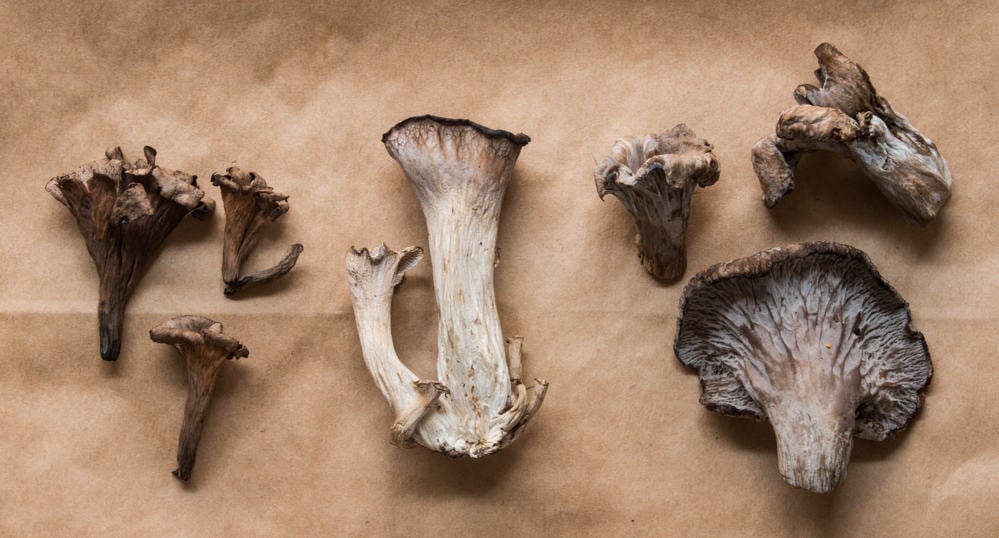
Look Alikes
Some consider devil's urn (Urnula craterium) a trumpet look alike, but they're more cup-shaped and appear in the spring. They're edible, but don't taste very good.
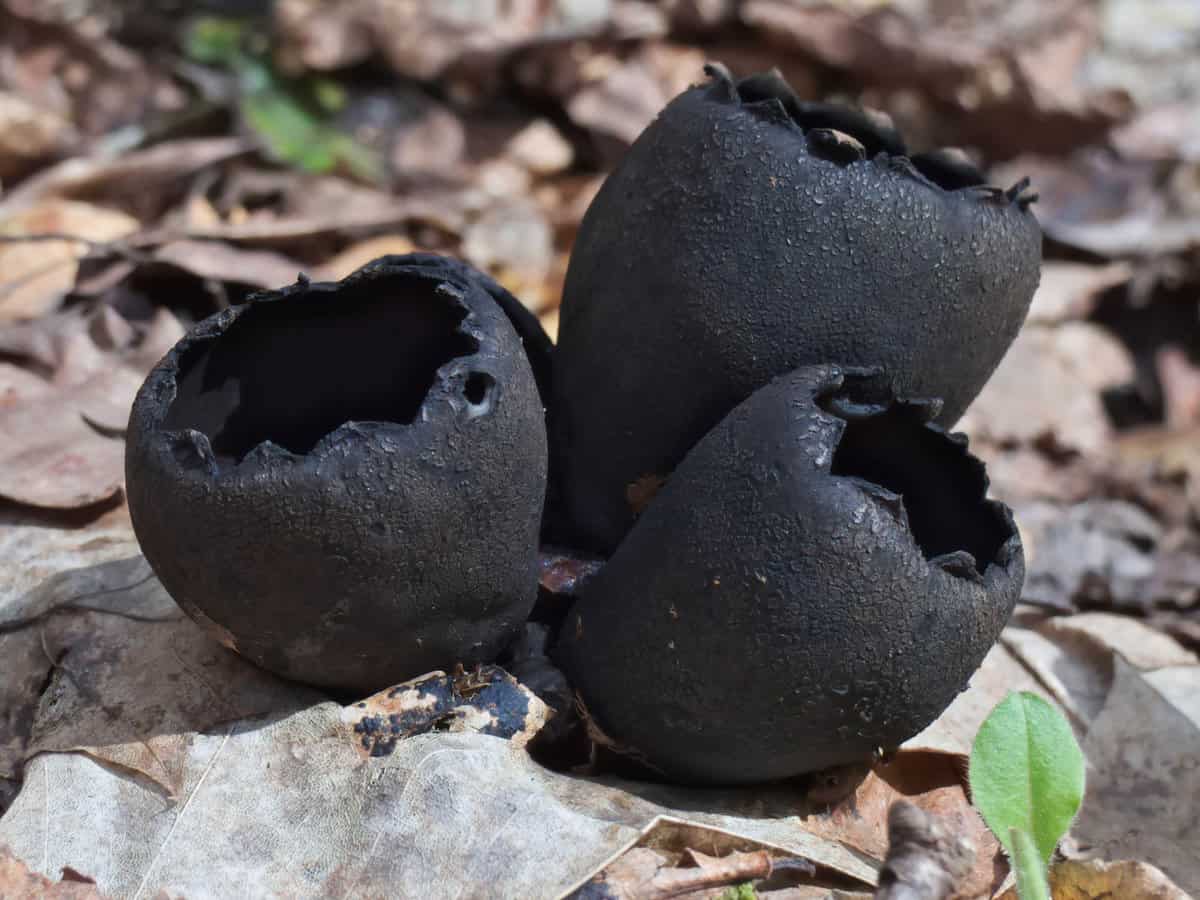
Cleaning Black Trumpet Mushrooms
Cleaning starts in the field. Some people just pull the mushrooms out of the ground and put them in a basket-don't do that. To avoid dirty mushrooms that can ruin your food with grit, I pull them from the ground, cut the end off, along with any dirt, then put them in the basket.
If I'm going to a patch where I expect to harvest lots of mushrooms, I like to bring a scissors since I can just bend down and snip-snip-snip, leaving the dirty bottoms behind and keeping all the mushrooms in my bag clean.

If my trumpets are very clean, I just open them up, leaving them in one piece, and give them a brush with a mushroom or pastry brush.
One of the best things about these mushrooms is that they're often very clean, and may not need any additional trimming after they're cut from the field, if you pick clean and carefully.
If my trumpets are a dirty or it's rained recently, I slice them in half lengthwise and then give them a gentle dip in some cool water, working quickly so that they don't absorb too much liquid.
After you wash them, just set them on some paper or cloth towels to air dry a bit and shed any water that may be sticking to them. I describe this a bit in the video below.
'How to Cook Black Trumpet Mushrooms
Black trumpet mushrooms have one of the most potent flavors of all wild mushrooms, especially when fresh.
They may be fragile or small, but they pack a punch. It's hard to describe exactly what black trumpets taste like besides saying they're delicious, but the flavor is a sort of a rich, earthy, oddly sweet and fruity taste that will remind you of fresh apricots and ripe stone fruit, with a bitter note at the end. It's a delicious, unique taste.
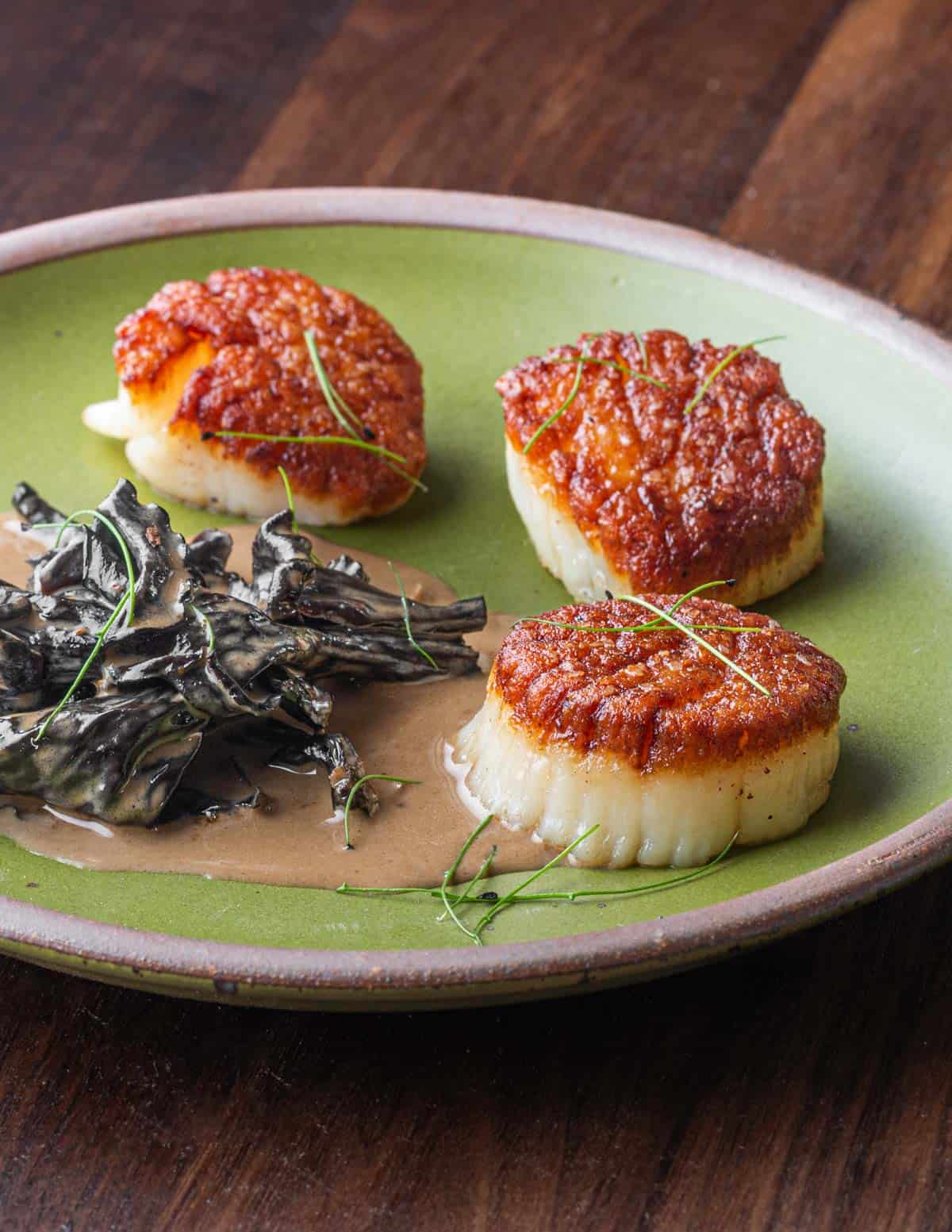
One of the best things about these is their versatility. If you've just come back from a long hunt, there's nothing wrong with just tossing some mushrooms in a pan with butter.
But if you have more time, you can make all kinds of things, limited only by your time and imagination. Here's a few things I think are helpful.
Quick tips
- As they're hollow, trumpets cook very fast-so don't overcook them.
- A large amount will wilt down to a fraction of it's size in the pan.
- Trumpets will turn other foods they come into contact with black or grey if the mushrooms are fresh.
- Another name for them is poor man's truffle. Finely chop them as a (visual) substitute for black truffles.
- With a sweet aroma and tender texture, these can work in sweet and savory dishes, such as candying.
- Black trumpets can be eaten raw in small amounts as a garnish.
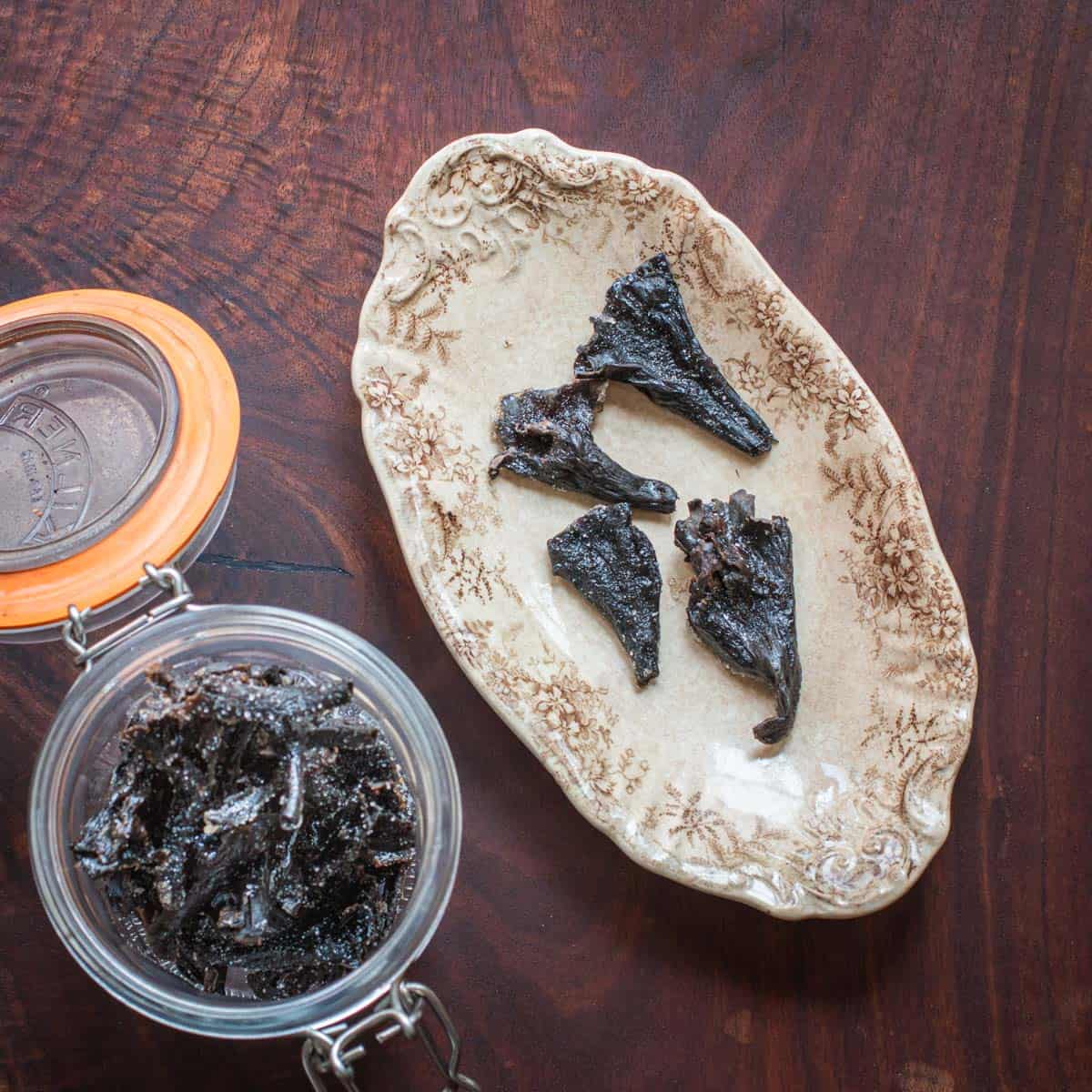
Like most mushrooms, these marry wonderfully with cream. Like other chanterelles, I would encourage you to cook these by themselves first, and keep things simple as their flavor can be overwhelmed by strong flavors like excessive garlic, smoked food, spices, and spicy/hot seasonings.
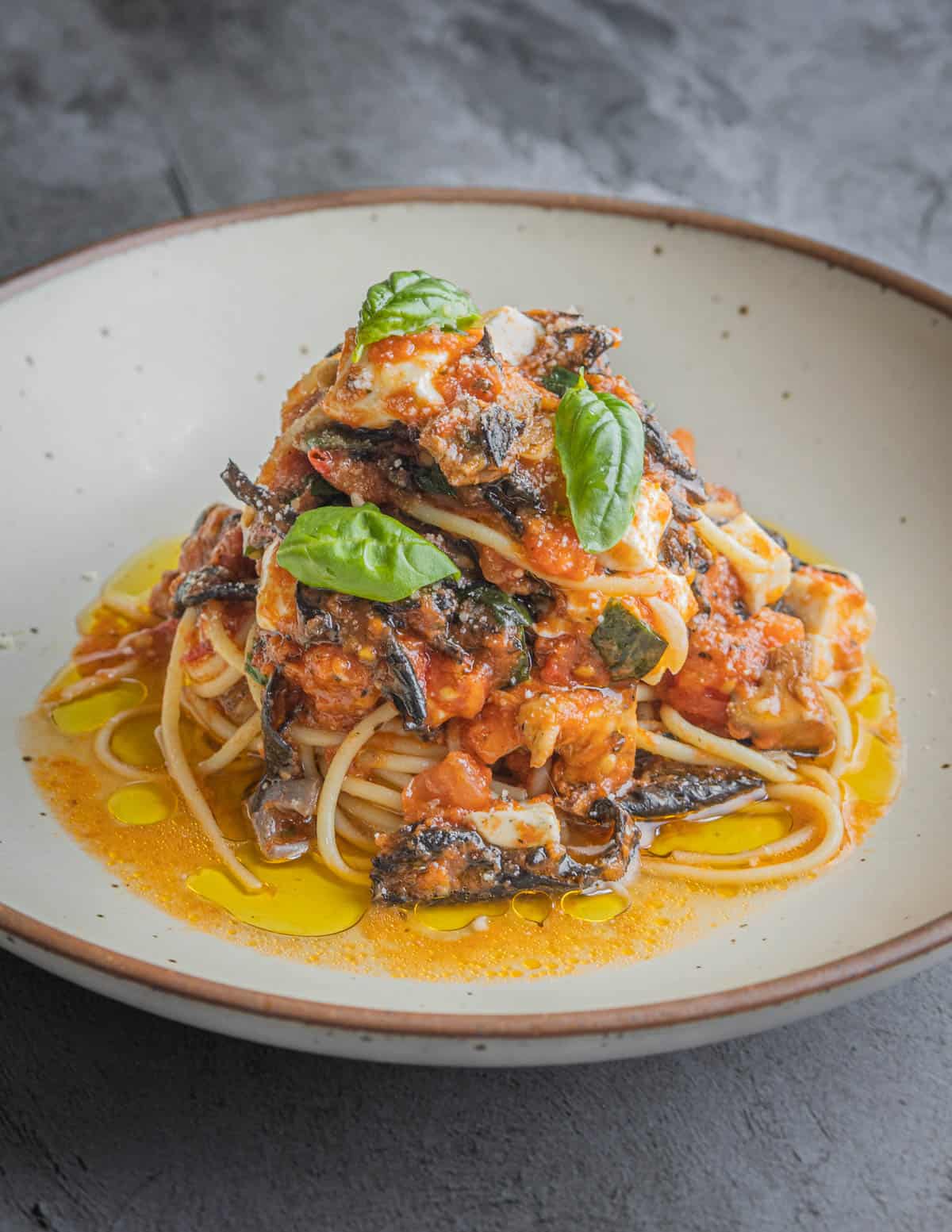
Bitterness
Use trumpets with a light hand at first as they can be bitter if you use too many in a dish. The bitterness will concentrate itself, so be careful when making reduction-type sauces, for example: purees, or putting too many in a soup.
The bitterness is a bit of an acquired tastes, and most mushroom hunters grow to like and crave it to some extent. It's not unpleasant, but some sensitive people may not like it.
How to Dry Black Trumpet Mushrooms
There's a few different ways you can preserve trumpets, but drying is by far the best. Luckily, as black trumpets are hollow, they dry like a dream, and are one of the best mushrooms for drying and using in the off season as they don't get tough. To dry the mushrooms, I look over them for debris, then put in a dehydrator at 120-145F until cracker dry, typically overnight.
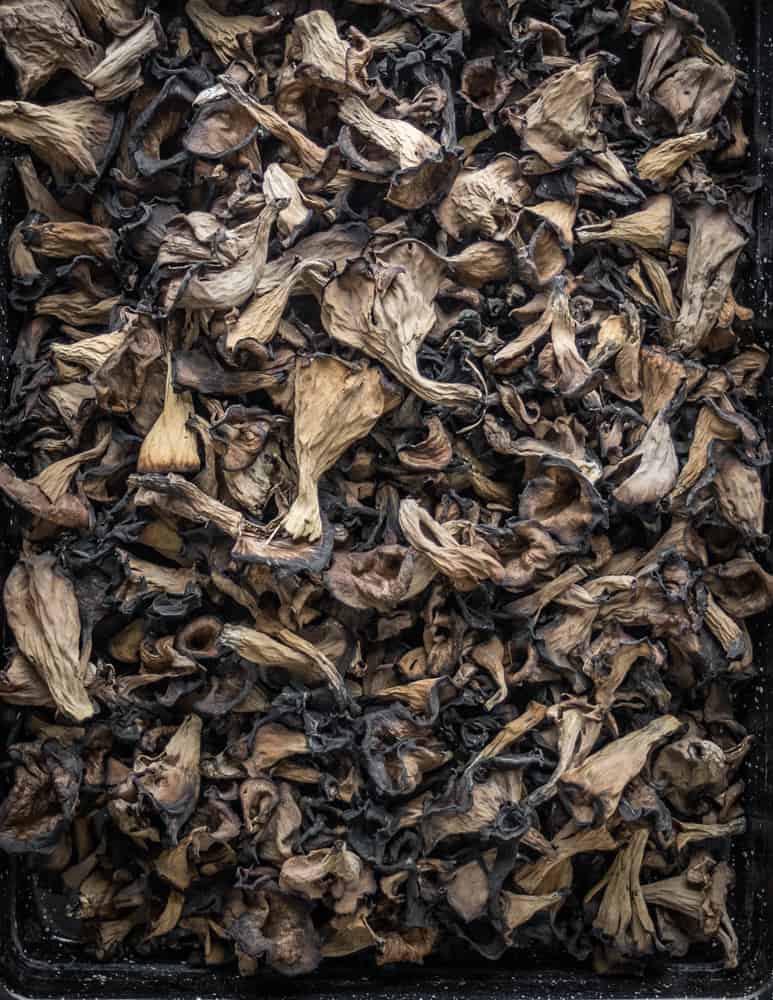
Occasionally I've left mushrooms spread out on cookie sheets with a ceiling fan blowing on them and found them naturally dehydrated after a day or two-something you can't do with golden chanterelles.
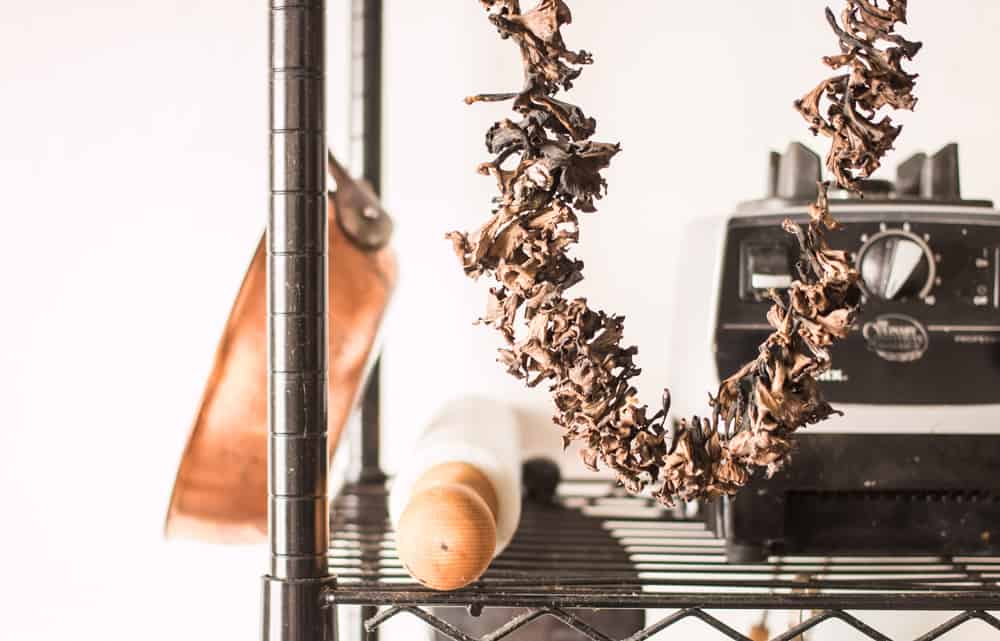
Once they're cracker dry, I store the mushrooms in a sealed glass container or mason jar. For cooking, rehydrate the mushrooms by covering with warm liquid, stock, or alcohol. Remove the mushrooms, strain the liquid for debris, adding the mushrooms back to their liquid for whatever recipe you're making, or simply frying them up and discarding the liquid if you don't need it.
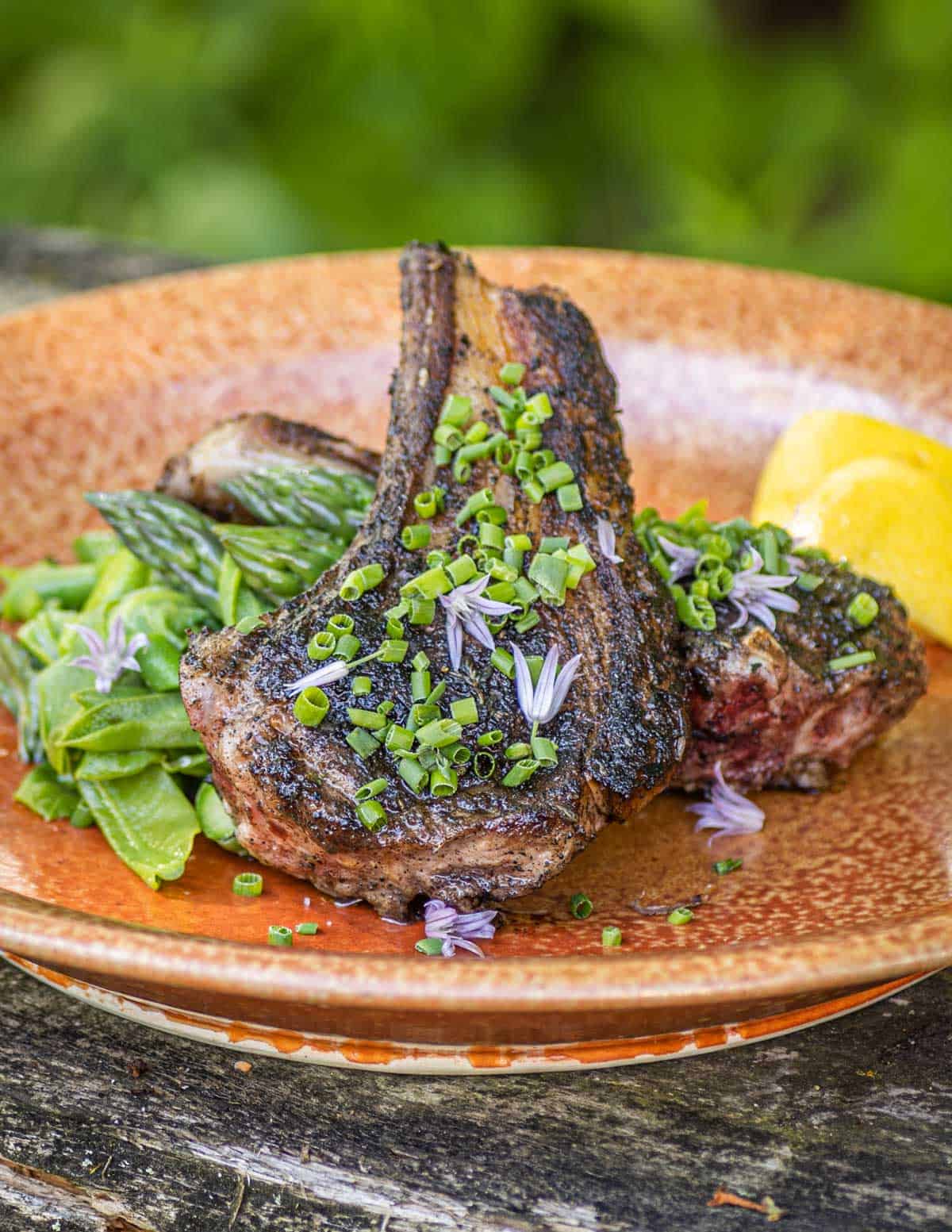
Black Trumpet Mushroom Recipes
Here's some of my favorite black trumpet recipes, or places where they can be substituted. One of the most unique things about these mushrooms is that they can work in savory as well as some sweet applications, so find a few of both below.
- Black Trumpet Pasta
- Candied Trumpets
- Sweet Mushroom Jam
- Jacques Chibois's Carbonara of Chanterelles and Black Trumpets
- Baked Fish with Trumpet Crust
- Rack of Lamb or Venison with Dried Trumpet Crust
- Black Trumpet Coulis
- Rabbit Braised In Milk, with Trumpets And Carrots
More Trumpet Recipes
More
35 Essential Wild Mushrooms Every Forager Should Know
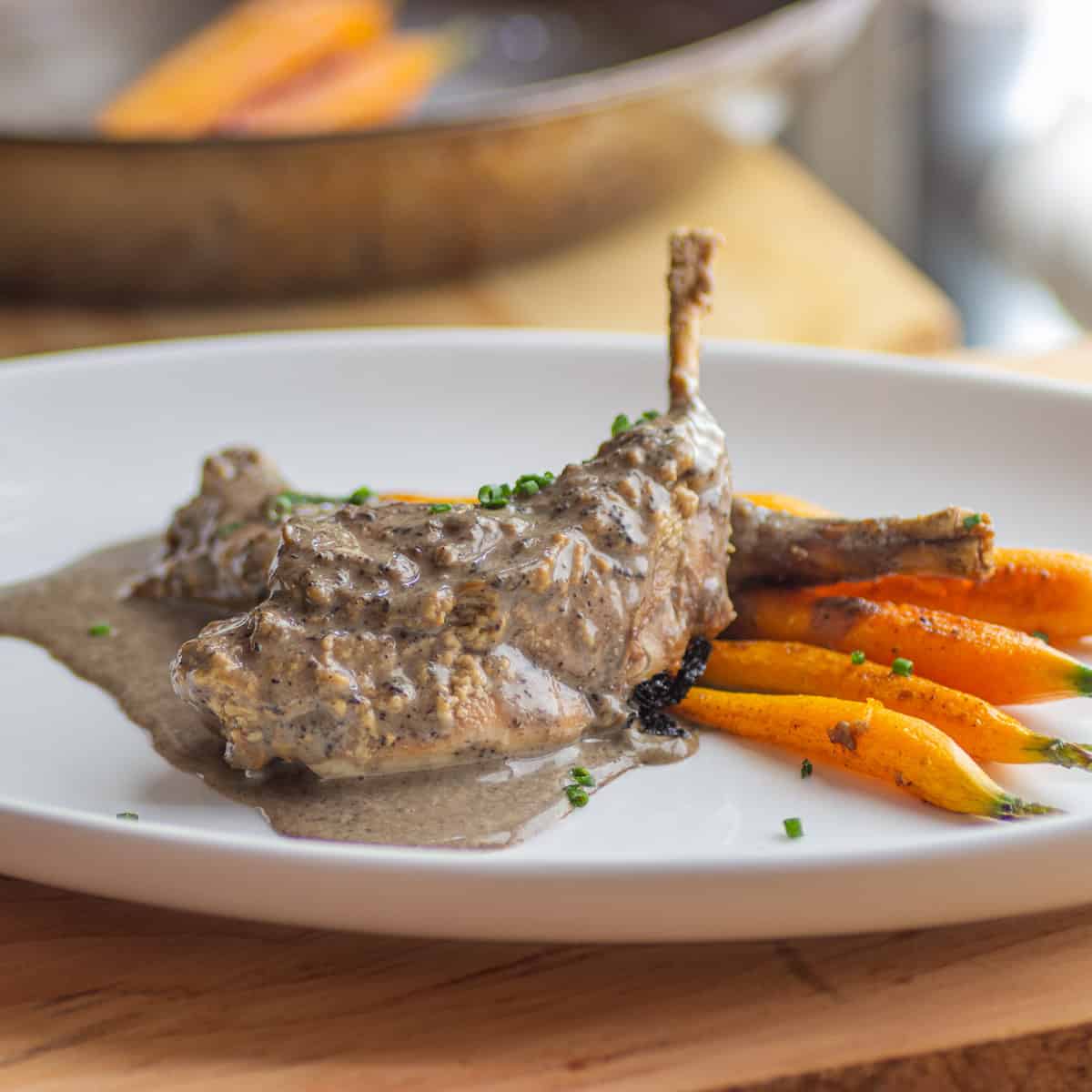

MQ
I found a recipe from you for a triple black trumpet polenta that was just fantastic. Specifically the milk reduction that was included with it. I don’t see it on here anymore and am hoping that I might be able get my hands on it again.
Theodore J Stanek
Made risotto with them, absolutely amazing...
Alan Bergo
Agreed.
Michelle
How do you know they’re ready to harvest? I just found a bunch in the woods by my house and would love to try them. Thanks!
Alan Bergo
As long as they're not black and wilted they're ready to go.
sean
Do these stop fruiting after the first hard frost? We've had a few nights below freezing already and I'm unsure if it's worth it to look for any more-
Alan Bergo
Last year I picked my biggest haul of them on Nov 1st. They can take a frost.
Grace
Hi Alan—I found my first ever big haul of black trumpets — so excited. I’ve only ever found a handful here and there so I’m not overly familiar with them. You mentioned that if they’re wilted to leave them alone. Is there a level of wilted-ness that is acceptable? I might’ve picked some older ones.
Thanks for the great tips, suggestions, and recipes!
Alan Bergo
Hi Grace. If they're wilted they're past prime. It happens to everyone and these mushrooms just have a short shelf life. When I dehydrate them I discard any that shrivel up and are very dark-that's a good trick for picking out the good from the bad.
BEST QUALITY MUSHROOM
Dear Sirs,
We are following your business from Turkey .
If you would need any gourmet mushroom which is available in our stock , we are always ready to support your service in any matter with pleasure.
Before all , our team is waiting for your new dishes and recipes of wild mushrooms.
awesome ...
Regards,
Best Quality Mushroom Team
Don Ringwood
Perfect
Michael Kmiotek
I just brought home about six pounds of Morels and will dry almost all of those. I then put them in a blender to chop them up. They are great in soups and omelets and last all year. I will get about a cup of sand sized particles.
I have given small jars to friends and include a tiny ceramic spoon.
There is nothing better than to be in the woods, naked and hunting mushrooms.
tom bagwell
You can speed up the drying process with an oscillating fan on your counter top, set on low. Just flip the mushrooms over from time to time to dry everything evenly and place something behind them so they don't blow off onto the floor or in the sink. I started doing this with morels.
Alan Bergo
That's a great tip, thanks Tom!
LILI PAUL
I have found that drying mushrooms in the microwave (2 min in-2 min out to cool~~ repeated until dried) increases the flavor by condensing the moisture (read as “the flavor”).
Until much more flavor remains in the shroom.
And even when dried the fragrance is much deeper and sensationally rich.
Same with all herbs!
tom bagwell
You can speed up the drying process with an ocillating fan on your counter top, set on low. Just flip the mushrooms over from time to time to dry everything evenly and place something behind them so they don't blow off onto the floor or in the sink. I started doing this with morels.
Amy
Great info! Accidentally stumbled across a massive amount of these in northern Minnesota a few days ago. My 7 tear old nephew spotted the first few then us adults noticed they were everywhere! I didn't even know what they were but luckily had a good book on me with enough information to make it worth picking and hauling a few pounds to identify later.
How long on average would you say it takes to dehydrate when they're split in half?
Alan Bergo
Hi Amy, leave them out for a week or so to make darn sure they're dessicated enough to be stored in a sealed container. They should be cracker dry.
Mary
Alan, I am not a professional chef, but just discovered your blog and am so in love with it. You so vividly capture the sensuality and beauty of eating wild foods. Thank you for writing it.
I recently moved here from Northern California, where foraging season will be starting soon if they get some rain. I had my "secret" spots there for Black trumpets, Yellow feet & hydnum repandum--sometimes all in the same spot, and not too far from San Francisco. I would be glad to privately share some of them with you if you would not mind sending me in the direction of some experienced forager/chefs or just spots in the Twin Cities areas (outside of MMS). I personally have never found a maitake, but have indeed found plenty of black trumpets and would love to get a feel for the landscape here with one or two other people. I am lost without huckleberry bushes growing here, which is where the craterellus & hydnums seem to grow! Not to mention how fantastic the huckleberries are in the late summer.
By the way, is the season over now?
Dave
these guys grow like crazy in my woods, just picked a bunch today, sooo good!!
Alan Bergo
Nice, yeah they're great!